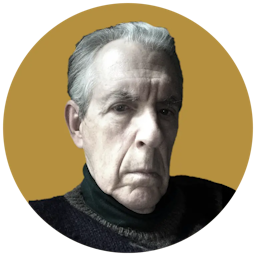Pushing Against the Restrictions of Biography
What can seem a frustrating limitation is also a glory: No biography — not even the so-called definitive ones — can have the last word.

‘Firebird: A Bloomsbury Love Story’
By Susan Sellers
Edward Everett Root, Publishers, 217 pages
‘The Mitford Affair: A Novel’
By Marie Benedict
Sourcebooks, Landmark, 352 pages
“The curtain rises and the audience settles expectantly. London, in this spring of 1921, is in thrall to the Russian ballet.” So begins Susan Sellers’s superb biographical novel about economist John Maynard Keynes and dancer Lydia Lopokova. This unlikely match between a confirmed homosexual and a decidedly loquacious, undereducated artist scandalized his Bloomsbury cohort, even though they were not exactly known for conventional behavior.
Ms. Sellers, a professor of English at the University of St. Andrews, hews closely to the facts, but adds in her acknowledgments: “I have not consciously introduced any element for which there is not already a suggestion in what is known of their lives.”
Ah, “consciously.” It is a good word to use, as both biographical novelists and biographers have their lapses — sometimes, without seeming to realize that they are unconsciously straying far from the provable record. Reviewers love to quibble with biographers, snatching up scenes and words that seem more fiction than fact.
Norman Mailer went so far as to say historians write fiction, selecting, say, 300 facts out of 3,000 to shape their narratives. Choosing a different 300 facts would yield quite another “history” — the point that Mailer makes eloquently in “The Armies of the Night” by subtitling its two sections “History as a Novel” and “The Novel as History.”
Ms. Sellers exercises a novelist’s privilege, putting us in the moment, in the present tense, so nothing is amiss in that first sentence. The curtain rises in front of an expectant audience. A biographer might write the same sentence. Is there a note based on a source saying the audience was expectant?
Noel Riley Fitch wrote her biography of Anais Nin in the present tense. It works, up to a point, breaking up that deterministic aspect of the past tense that prevents biographers from deviating from what happened. Yet at least some readers balk at not giving the past tense its due.
Biographers like Edmund Morris have chafed at the restrictions of biographical conventions. He aspired to be a Boswell and so invented himself as Ronald Reagan’s contemporary in “Dutch,” which outraged critics who did not want to read about the biographer as a fictional character. Unfazed, Morris produced a biography of Thomas Edison in which each chapter goes backward in time, thwarting cravings for chronology.
The paradox of fiction, even of novels in which historical figures appear, is that history can seem de novo — at least in the prose of an accomplished novelist like Marie Benedict. So we have Nancy Mitford watching her sister Diana, whose Nazi connection bedevils her novelist sibling:
“There, at the center of the vast ballroom, stands the stunning, statuesque figure in a floor-length sheath of platinum silk, a shade that echoes her silvery eyes. Her diamond-laden arms outstretched in welcome to her guests, she radiates serenity and unflappable, irresistible poise. If she were anyone else — someone I didn’t know as intimately as I know myself — I would judge that sphinxlike smile a charade. Or worse. But I know she is precisely as she appears, because she is Diana, my sister.”
Oh, how Edmund Morris wanted to achieve the Benedict effect. Yet in “Dutch,” as a character he seems factitious whereas Ms. Benedict’s Diana, no matter how much of her is invented, is not.
Biographers keep trying to open up the form of their genre. The oral biography, such as Peter Manso’s “Mailer: His Life and Times,” attempts to arrange many voices talking about his subject so as to create a kaleidoscopic impact.
In my own “William Faulkner Day by Day,” I document as much as I can of the diurnal man, restoring many facts that biographical narratives, no matter how long, leave out. The effect is to turn the reader into a biographer selecting, assembling, and assessing the raw data.
Yet what can seem a frustrating limitation in biography is also its glory: No biography — not even the so-called definitive ones — can have the last word. Life is too protean, biography is too protean, to be enclosed in a single book. The answer to one biography is always another biography.
Mr. Rollyson is the author of “Reading Biography” and “Norman Mailer: The Last Romantic”

